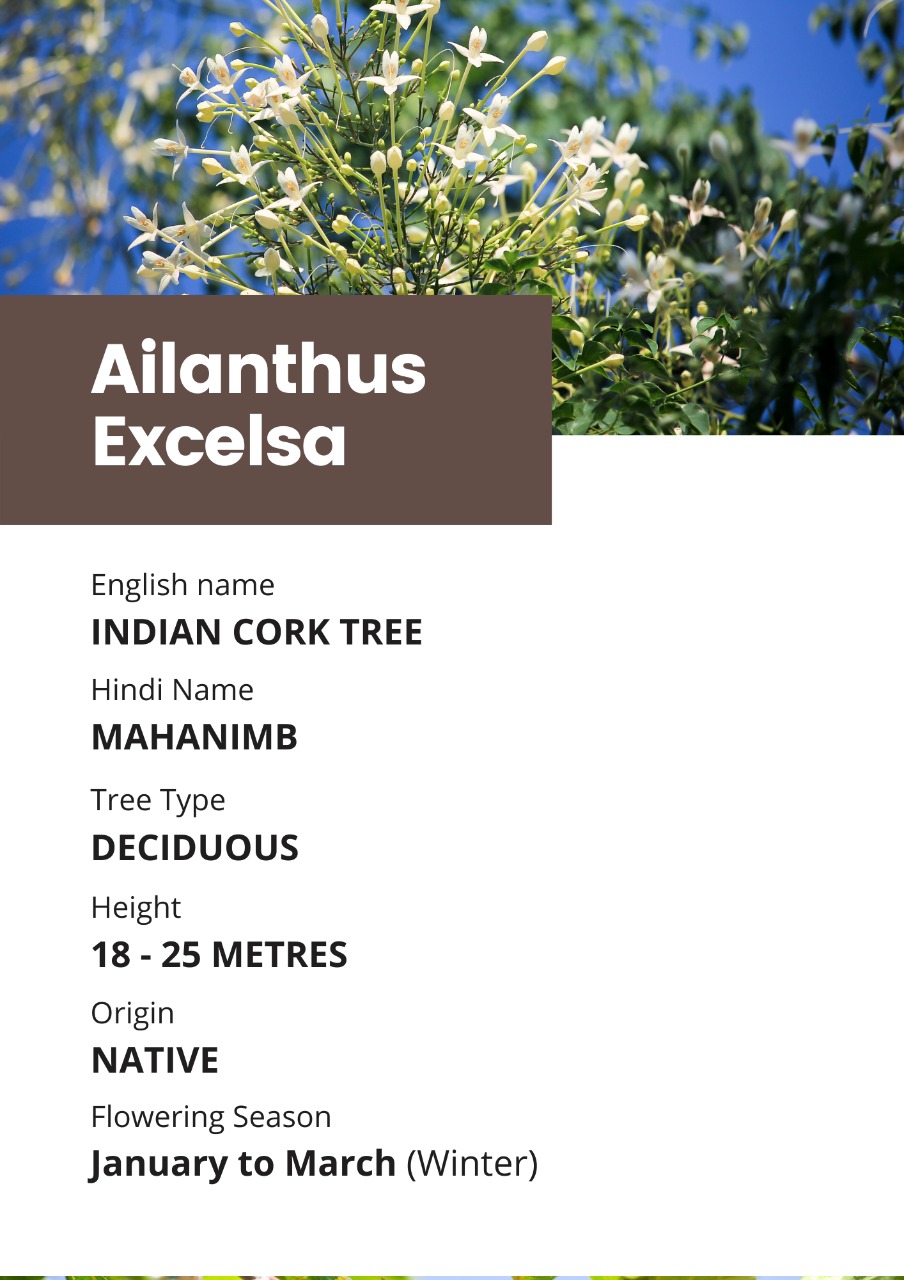
INDIAN CORK TREE
Ailanthus excelsa (Indian cork tree):
Family: Ailanthus excelsa belongs to the Simaroubaceae family
Common Name: Ailanthus excelsa is commonly known as the Indian cork tree or the Indian tree of Heaven.
Flowering period: The tree usually flowers from January to March.
Habitat: The tree is native to India and grows well in subtropical climates.
Uses: The gum and the bitter, aromatic leaves are reported to have medicinal properties. The bark is a febrifuge (a medicine used to reduce fever) and can be used as a treatment against asthma, bronchitis and dysentery. The leaves and bark are also in good repute as a tonic that is used after labor. The juice of the leaves and fresh bark is used as a remedy for after-pain.
Key features: The Indian cork tree is a large deciduous tree which is typically 18-25m tall. It has a straight trunk 60-80cm in diameter with a light grey and smooth bark. The bark can also be greyish brown and rough in larger trees. It also has a characteristic aroma and is bitter in taste. Leaves are large and are arranged in an alternate pattern with each leaf having 8-14 leaflets in pairs. Flower clusters can be discovered at the drooping leaf bases. These clusters are shorter than leaves and much more branched, and each cluster contains numerous flowers. Usually male and female flowers grow on different trees. These flowers are greenish yellow in colour and have short stalks. The fruit of the tree is a one-seeded samara which is pointy at its ends and twisted at the base.